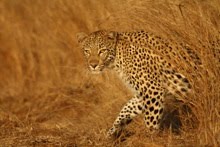Sunbirds are these crazy crazy creatures that spend their lives flying about behind a ridiculously long decurved bill. I suppose they are what results when a songbird decides it wants to look like a curlew or whimbrel (only prettier).
One of the birds that I really loved as a young birdwatcher and ringer was the Eastern Olive Sunbird (Nectarinia olivacea aka Cyanomitra olivacea; Olivnektarvogel). I know it as a coastal or scarp forest bird species, typically liking open sunny forest clearings, and drifting in to gardens and wandering up and down riparian forest watercourses.
As sunbirds go, the Olive Sunbird is rather drab, sporting matt green plumage. But it is when the males get excited that they start to stand out. They have these little bushels of bright yellow feathers that they poke out of their shoulders in territorial disputes or when a predator - like the African Goshawk - is about.

Olive sunbird in a Common Coral Tree aka Lucky Bean Tree (Erythrina lysistemon) digiscoped using Swarovski Optik STM80HD spotting scope, 25-50x zoom eyepiece, Swarovski UCA digiscoping adapter, Canon's baby DSLR the 1000D.
But the absolute bestest thing about the Olive Sunbird is its call (play xeno canto recording by Patrik Åberg here). It might not be the most incredible call, but this is what my home forests sound like to me. It is like drinking from a fountain of joy and youth to hear it whistling away in the forest.
A closely related and equally non-flamboyant sunbird species is the Grey Sunbird (Nektarinia veroxii aka Cyanomitra veroxii aka Mouse-coloured Sunbird; Graunektarvogel). The grey sunbird lives in much the same habitat and has a similar southern African distribution to the Eastern Olive Sunbird, although I generally found it somewhat less common. However, it could well be that the grey sunbird just does not sing as much as the olive sunbird, but this is just speculation on my part.
While the Olive Sunbird has the bright yellow "I'm all excited" flashlights, the Grey Sunbird has bright red shoulder tufts which it flaunts in the face of competition. But it seems less likely to show these off than the olive sunbirds.
Despite having those ridiculously long bills, sunbirds actually get a whole lot of their dietary requirements from insects; caught mainly on the wing. The flowers give the sugars and fast-energy fuel; while the insects provide the necessary proteins and long-term support for reproduction and body maintenance.
Sunbird really are lovely, I should post a few more photos of them...
Happy birding,
Dale Forbes
















.jpg)



.jpg)








.jpg)


